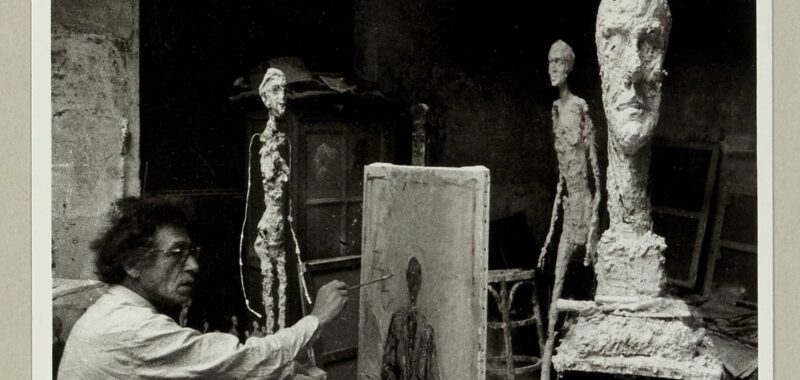In a new biography by Michael Peppiatt, 20th-century Swiss sculptor Alberto Giacometti gets the rock star treatment. The cover of Giacometti in Paris is comprised almost entirely of the artist’s craggy and pitted face, as timeless and veristic as a Roman bust, and as eminently cool as Keith Richard. It’s a solid choice, telegraphing that what’s inside will be more about the man, his aura and his appeal, than about his art. But the image, taken by photographer Franz Hubmann, does reflect something essential in Giacometti’s work itself: its uncanny ability to capture the energy of ancient art in a modern format.

From the book’s opening pages, the reader is in good hands with Peppiatt, a British writer and art historian who has spent much of his career in Paris. It opens in the 1960s with a charming account of a young Peppiatt visiting the painter Francis Bacon — whom he met while interviewing him for a student publication — to say goodbye before he heads to Paris for work. Bacon insists that his young friend must meet Giacometti: “The thing is there’s something terribly sympathetic about him. And he knows absolutely everyone in Paris.” It’s a promise to the reader that Peppiatt’s subject is a congenial one, his life intersecting with some of the most influential figures of 20th-century Paris.
Off the author goes, with a letter of introduction from one artist titan to another. But like a lot of young people, he assumed there was plenty of time. Hesitant to introduce himself, Bacon’s letter notwithstanding, he discovers that in the meantime Giacometti has died. “It could have ended there,” he writes. “Most missed opportunities do.” Instead, he digs into collecting books and catalogs on Giacometti, accumulating everything he can, including gossip, and now writing a biography of the artist who got away. From the start, Pappiatt’s telling is a little awestruck and always sympathetic to the affable Giacometti, who possessed unearthly devotion to his work. He lived in a cold and plaster-strewn hovel for most of his Paris life, even after fame and money could easily have changed that.
While the book contains numerous evocative photographs of Giacometti’s startling studio-cum-living space — something like a half-organic grotto inhabited by an obsessive hermit, or a bombed-out bunker where no one survived — and of his famous friends, lovers, and favorite haunts, there isn’t a single standalone image of his artwork. It’s odd and more than a little sad. Yes, Google exists, but a book is an autonomous object, or ideally should be; I started reading on a plane, for example, with no access to the internet. At any rate, I missed seeing the work itself throughout the book, particularly when Peppiatt describes Giacometti’s drawings or compares works I couldn’t easily call to mind. If this is perhaps an issue of rights, reproduction costs, or some other difficulty of reproducing Giacometti’s work, it’s never addressed.

The missing art is a significant hole, but Peppiatt otherwise crafts a compelling portrait of an intensely single-minded artist who generally had a great life that he mostly didn’t screw up. Peppiatt is a bit breezy in recounting Giacometti’s relationships with women, which could be disturbing, such as a lifelong obsession with prostitutes and his published fantasies of rape, along with works such as “Woman with Her Throat Cut” (1932). He does convincingly describe the love and humanity of the artist’s closest relationships. His brother, Diego, for example, lived with or near him for decades as his studio assistant, constant model, and lifelong friend. The brothers were named by their artist father, Giovanni, after Dürer (Alberto) and Velázquez (Diego), so while not quite nepo babies, they were primed for artistic greatness. That one brother achieved it and the other supported him is surprising and heartening. Samuel Beckett, a close friend of the artist, went so far as to compare their relationship to that of Theo and Vincent van Gogh.
Giacometti is best known for his postwar style of harrowing, haggard figures who are skeletal and post-apocalyptic, while also somehow striving. A vision of humanity that would still claw forward in the ruin. A little dark and a little hopeful, much like the man himself.

